- Home
- James Patterson
Women's Murder Club [08] The 8th Confession Page 2
Women's Murder Club [08] The 8th Confession Read online
Page 2
Chapter 2
“DON’T BE MAD,” I said, tucking the blanket under Joe’s chin, patting his stubbly cheeks, planting a PG-13-rated kiss on his mouth, careful not to get him going again because I just didn’t have enough time to get back in the mood.
“I’m not mad,” he said, eyes closed. “But I am going to be seeking retribution tonight, so prepare yourself.”
I laughed at my big, handsome guy, said, “Actually, I can’t wait.”
“Cindy’s a bad influence.”
I laughed some more.
Cindy is a pit bull in disguise. She’s all girlie-girl on the outside but tenacious through and through, which is how she pushed her way into my gory crime scene six years back and wouldn’t give up until she’d nailed her story and I’d solved my case. I wished all of my cops were like Cindy.
“Cindy’s a peach,” I said to my lover. “She grows on you.”
“Yeah? I’ll have to take your word for it.” Joe smirked.
“Honey, would you mind —?”
“Will I walk Martha? Yes. Because I work at home and you have a real job.”
“Thanks, Joe,” I said. “Will you do it soon? Because I think she’s got to go.”
Joe looked at me deadpan, his big blue eyes giving me the business. I blew him a kiss, then I made a run for the shower.
Several months had blown by since my cozy apartment on Potrero Hill had burned out to the walls — and I was still getting used to living with Joe in his new crib in the high-rent district.
Not that I didn’t enjoy his travertine shower stall with the dual heads and a gizmo that dispensed gel, shampoo, and moisturizer, plus the hotel-style bath sheets folded over a heated brass rack.
I mean, yeah. Things could be worse!
I turned the water up hot and high, soaked and lathered my hair, my mind going to Cindy’s phone call, wondering what she was so charged up about.
Last I heard, dead bums didn’t make headlines. But Cindy was telling me this was some kind of special bum with a special name. And she was asking me to check out the scene as a favor to her.
I dried my hair, padded down the carpeted hallway to my own walk-in closet, which was still mostly empty. I stepped into clean work pants, shrugged on an aqua-colored pullover, checked my gun, buckled my shoulder holster, and topped it all off with my second-best blue blazer.
I bent to ruffle the silky ears of my lovely border collie, Sweet Martha, and called out, “Bye, honey,” to Joe.
Then I headed out to meet Cindy’s newest passion: a dead bum with a certifiably crazy name.
Bagman Jesus.
Chapter 3
CINDY STOOD AT the dead man’s side and filled her notebook, getting down the names, the descriptions, the exact quotes from Bagman Jesus’s friends and mourners.
“He wore a really big cross,” said a Mexican dishwasher who worked at a Thai restaurant. He sported an Adidas T-shirt and jeans under a dirty white apron. Had koi tattooed on his arms. “The cross was made of two, whatchamacallit, nails —”
“It was a crucifix, Tommy,” said a bent white-haired woman leaning against her shopping cart at the edge of the crowd, sores on her legs, her filthy red coat dragging in the street.
“’Scuuuuse me, boss. What I meant was, a crucifix.”
“And they weren’t nails, they were bolts, about three inches long, tied together with copper wire. And don’t forget that toy baby on that cross. A little pink baby.” The old woman held a thumb and forefinger an inch apart to show Cindy how small that toy baby was.
“Why would someone take his crucifix?” the heavyset woman asked. “But his b-b-bag. That was a real leather bag! Lady, write this down! He was murdered for his s-s-stuff.”
“We didden even know his real name,” said Babe, a big girl from the Chinese massage parlor. “He give me ten dollah when I had no food. He didden want nothing for it.”
“Bagman took care of me when I had pneumonia,” said a gray- haired man, his chalk-striped suit pants cinched at the waist with twine. “My name is Bunker. Charles Bunker,” he told Cindy.
He stuck out his hand, and Cindy shook it.
“I heard shots last night,” Bunker said. “It was after midnight.”
“Did you see who shot him?”
“I wish I had.”
“Did he have any enemies?”
“Will you let me through?” said a black man with dreads, a gold nose stud, and a white turtleneck under an old tuxedo jacket who was threading his way through the crowd toward Cindy.
He slowly spelled out his name — Harry Bainbridge — so Cindy would get it right. Then Bainbridge held a long, bony finger above Bagman’s body, traced the letters stitched to the back of Bagman’s bloody coat.
“You can read that?” he asked her.
Cindy nodded.
“Tells you everything you want to know.”
Cindy wrote it down in her book.
Jesus Saves.
Chapter 4
BY THE TIME Conklin and I got to Fourth and Townsend, uniforms had taped off the area, shunted the commuters the long way around to the station entrance, shooed bystanders behind the tape, and blocked off all but official traffic.
Cindy was standing in the street.
She flagged us down, opened my car door for me, started pitching her story before I put my feet on the ground.
“I feel a five-part human-interest series coming on,” she said, “about the homeless of San Francisco. And I’m going to start with that man’s life and death.”
She pointed to a dead man lying stiff in his bloody rags.
“Thirty people were crying over his body, Lindsay. I don’t know if that many people would cry if it was me lying there.”
“Shut up,” Conklin said, coming around the front of the car. “You’re crazy.” He gently shook Cindy’s shoulder, making her blond curls bounce.
“Okay, okay,” Cindy said. She smiled up at Conklin, her slightly overlapping front teeth adding a vulnerable quality to her natural adorableness. “Just kidding. But I’m real serious about Bagman Jesus. You guys keep me in the loop, okay?”
“You betcha,” I said, but I didn’t get why Cindy regarded Bagman Jesus as a celebrity, and his death as a major deal.
I said, “Cindy, street people die every day —”
“And nobody gives a damn. Hell, people want them dead. That’s my point!”
I left Cindy and Conklin in the street and went over to show my badge to K. J. Grealish, the CSI in charge. She was young, dark-haired, and skinny, and had nearly chewed her lips off from stress.
“I’ve been on my feet for the last twenty-seven hours straight,” Grealish told me, “and this pointless dung heap of a crime scene could take another twenty- seven hours. Tell me again. Why are we here?”
As the trains rumbled into the yard, dust blew up, leaves fell from the trees, and newspapers flew into the air, further contaminating the crime scene.
A horn honked — the coroner’s van clearing cops out of the way. It parked in the middle of the street. The door slid open, and Dr. Claire Washburn stepped out. She put her hands on her size-16 hips, beamed her Madonna smile at me — and I beamed back. Then I walked over and gave her a hug.
Claire is not only San Francisco’s chief medical examiner but my closest friend. We’d bonded together a decade and a half back when she was a plump, black assistant medical examiner and I was a tall blonde with a 34D bra size, trying to survive my first savage year of on-the-job training in Homicide.
Those had been tough, bloody years for both of us, just trying to do our jobs in a man’s world.
We still talked every day. I was her new baby’s godmother, and I felt closer to Claire than I did to my own sister. But I hadn’t seen her in more than a week.
When we turned each other loose from the hug, Claire asked the CSI, “K.J.? You got your photos of the victim?”
Grealish said she had, so Claire and I ducked under the tape and, no surprise, Cindy cam
e along with us.
“It’s okay,” I said to Grealish. “She’s with me.”
“Actually,” Cindy said under her breath, “you’re with me.”
We stepped around the blood trail, skirted the cones and markers, then Claire put down her bag and stooped beside the body. She turned Bagman’s head from side to side with her gloved hand, gently palpated his scalp, probing for lacerations, fractures, or other injuries. After a long pause, she said, “Holy moly.”
“That’s enough of that medical jargon,” I said to my friend. “Let’s have it in English.”
“As usual, Lindsay” — Claire sighed — “I’m not making any pronouncements until I do the post. But this much I’ll tell you… and this is off the record, girl reporter,” she said to Cindy. “You hear me?”
“Okay, okay. My lips are sealed. My mouth’s a safe.”
“Looks like your guy wasn’t just given a vicious beat-down,” Claire murmured. “This poor sucker took multiple gunshots to his head. I’m saying he was shot at close range, probably until the gun was empty.”
Chapter 5
THE KILLING OF a street person has zero priority in Homicide. Sounds cold, but we just don’t have the resources to work cases where the killer will never be found.
Conklin and I talked it over while sitting in the car.
“Bagman Jesus was robbed, right?” said Conklin. “Some other homeless dude beat the crap out of him and, when he fought back, blew him away.”
“About those gunshots. I don’t know. Sounds more like gangbangers. Or a bunch of kids rolling a bum for kicks, then capping him because they could get away with it. Just look at that,” I said, indicating the crime scene: bloody footprints crisscrossing the pavement, tracking in nonevidentiary trace with every step.
And to add to that mess, there were no witnesses to the shooting, no handy video cam bolted to a streetlight, and no shell casings to be found.
We didn’t even know the victim’s real name.
Were it not for the drama Cindy was about to create in the Chronicle, this homeless man’s case file would have gone to the bottom of the stack until he was forgotten.
Even by me.
But those multiple gunshots fired “at close range” nagged at me.
“Beating and shooting is crazy for a robbery, Rich. I’m sensing a hate crime. Or some kind of crime of passion.”
Conklin flashed his lady-killer smile.
“So let’s work it,” he said.
He turned off the engine and we walked down to the end of the block, where Cindy’s subjects still loitered outside the barrier tape.
We reinterviewed them all, then expanded our scope to include all of Townsend as well as Clyde Street and Lusk Alley. We talked to bodega cashiers, salesclerks at a gay men’s novelty sex shop, hookers and druggies hanging out on the street.
Together we knocked on apartment doors in low-rent housing and spent the afternoon questioning forklift operators and laborers in the warehouses along Townsend, asking about the shooting last night outside the Caltrain yard, asking about Bagman Jesus.
Admittedly, many people scattered when they saw our badges. Others claimed to have no knowledge of Bagman or his death.
But the people who knew of Bagman Jesus had anecdotes to tell. How he’d broken up a liquor-store holdup, sometimes worked in a soup kitchen, said that he always had a few dollars for someone who needed it.
He was the elite, king of the street, we were told, a bum with a heart of gold. And his loss was tragic for those who counted him a friend.
By day’s end, my attitude had shifted from skepticism to curiosity, and I realized that I’d caught Cindy’s fever — or maybe the fever had caught me.
Bagman Jesus had been the good shepherd of a wounded flock.
So why had he been murdered?
Had he simply been in the wrong place at the wrong time?
Or had his death been specific and deliberate?
And that left us with two big questions no good cop could dodge with a clear conscience: Who had killed Bagman Jesus? And why?
Chapter 6
CONKLIN AND I got to the Hall around five, crossed the squad room to Lieutenant Warren Jacobi’s small glassed-in office that once had been mine.
Jacobi once had been mine, too — that is, he used to be my partner. And although we’d swapped jobs and disagreed often, we’d put in so many years and miles together, he could read my thoughts like no one else — not Claire, not Conklin, not Cindy, not Joe.
Jacobi was sitting behind his junkyard of a desk when we walked in. My old friend and boss is a gray-haired, lumpy-featured, fifty-three-year-old cop with more than twenty-five years’ experience in Homicide. His sharp gray eyes fixed on me, and I noted the laugh lines bracketing his mouth — because he wasn’t laughing.
Not even a little.
“What the hell have you two been doing all day?” he asked me. “Have I got this right? You’ve been working a homeless DOA?”
Inspector Hottie, as Conklin is known around the Hall, offered me the chair across from Jacobi’s desk, then parked his cute butt on the credenza — and started to laugh.
“I say something funny, Conklin?” Jacobi snapped. “You’ve got twelve unsolveds on your desk. Want me to list them?”
Jacobi was touchy because San Francisco’s homicide-solution rate was hovering at the bottom, somewhere below Detroit’s.
“I’ll tell him,” I said to Conklin.
I put my feet up against the front edge of Jacobi’s desk and said, “Time got away from us, Warren. This crime has a few odd angles, and the victim’s death is going to be written up in great big type in the Chronicle tomorrow. I thought we should get out in front of the story.”
“Keep talking,” said Jacobi, as if I were a suspect and he had me in the box.
I filled him in on the reported good works and the varying theories: that Bagman Jesus was a missionary or a philanthropist, that the baby on his crucifix was a pro-life statement or that it symbolized how we’d all once been innocent and pure — like Baby Jesus.
“The guy had a way with people,” I concluded. “Very charismatic, some kind of homeless person’s saint.”
Jacobi drummed his fingers. “You don’t know this saint’s name, do you, Boxer?”
“No.”
“And you have no clue as to who killed him or what the motive was?”
“Not a hint of a clue.”
“That’s it, then,” Jacobi said, slapping the desk. “It’s over. Finished. Unless someone walks in and confesses, you’re done wasting department time. Get me?”
“Yes, sir,” said Conklin.
“Boxer?”
“I hear you, Lieutenant.”
We cleared out of Jacobi’s office and punched out for the day. I said to Conklin, “You understood that, right?”
“What’s not to understand about ‘finished’?”
“Rich, Jacobi was clear as day. He told us to work Bagman Jesus on our own time. I’m going down to see Claire. You coming?”
Chapter 7
CLAIRE WAS WEARING a surgical gown with a butterfly pin at the neckline, apron stretched across her girth, flowered shower cap covering her hair. On the stainless autopsy table in front of her lay a naked Bagman Jesus, his terrible bashed- in features facing up at the lights.
A Y incision ran from clavicles to pubis and had been sewn up in baseball stitches with coarse white thread. He had bruises all over his body and overlapping lacerations and contusions.
Bagman Jesus had been worked over with a vengeance.
“I got back the X-rays,” Claire said. As she talked, I looked over at where they were pinned to the light box on the wall.
“Broken right hand, probably took a swing at his attacker or it was stomped on when he was down. He’s got a lot of fractures involving his facial bones, as well as multiple skull fractures. Broken ribs, of course, three of them.
“All this multiple blunt-force trauma might have killed hi
m, but by the time someone took a bat to him, he was already dead.”
“Cause of death? Give it to me, Butterfly. I’m ready.”
“Jeez,” she said. “Working as fast as I can and still not up to Lindsay time.”
“Please?” I said.
Resigned, Claire reached behind her, held up a bunch of small glassine bags with what looked like distorted slugs inside.
“Those are twenty-twos?” Conklin asked her.
“Right you are, Rich. Four of the shots to the head did the old internal ricochet. Went in here, here, right here, and back here, whizzed around under the scalp, and laid there like bugs under a rug.
“But I suppose there’s an outside chance Mr. Jesus could’ve survived those four slugs.”
“And so?” I asked. “What killed him?”
“Soooo, baby girl, the shooter plugged Mr. Jesus through the temple, and that was likely your murder round. Shot him again at the back of his neck for good measure.”
“And then his killer beat his face in? Broke his ribs?” I asked, incredulous. “Talk about crime of passion.”
“Oh, someone hated him, all right,” Claire told us. She called out to her assistant. “Put Mr. Jesus away for me, will you, Bunny? Get Joey to help you. And write ‘John Doe number twenty-seven’ and the date on his toe tag.”
Conklin and I followed Claire to her office.
“Got something else to show you,” Claire told us. She tore off her shower cap and peeled off her surgical gown. Underneath, Claire wore blue scrubs and her favorite T-shirt, the one with the famous quote on the front: “I may be fat and I may be forty, but here I is.”
That line cracked Claire up, but since she’s now forty-five, I was thinking she might be getting a new favorite T-shirt one of these days.
Meanwhile, she offered us seats, sat down behind her desk, and unlocked the top drawer. She took out another glassine evidence bag, put it on the desk, and bent her gooseneck lamp down to throw light directly on it.

 Miracle at Augusta
Miracle at Augusta The Store
The Store The Midnight Club
The Midnight Club The Witnesses
The Witnesses The 9th Judgment
The 9th Judgment Against Medical Advice
Against Medical Advice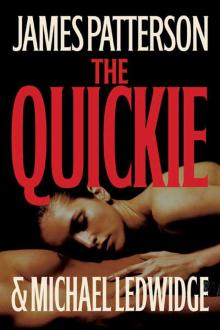 The Quickie
The Quickie Little Black Dress
Little Black Dress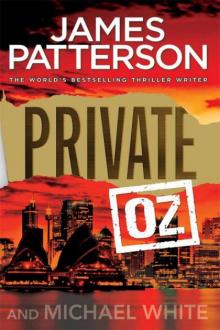 Private Oz
Private Oz Homeroom Diaries
Homeroom Diaries Gone
Gone Lifeguard
Lifeguard Kill Me if You Can
Kill Me if You Can Bullseye
Bullseye Confessions of a Murder Suspect
Confessions of a Murder Suspect Black Friday
Black Friday Manhunt
Manhunt Filthy Rich
Filthy Rich Step on a Crack
Step on a Crack Private
Private Private India
Private India Game Over
Game Over Private Sydney
Private Sydney The Murder House
The Murder House Mistress
Mistress I, Michael Bennett
I, Michael Bennett The Gift
The Gift The Postcard Killers
The Postcard Killers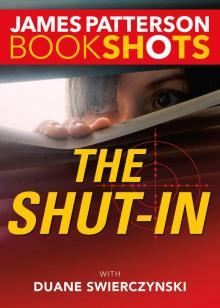 The Shut-In
The Shut-In The House Husband
The House Husband The Lost
The Lost I, Alex Cross
I, Alex Cross Going Bush
Going Bush 16th Seduction
16th Seduction The Jester
The Jester Along Came a Spider
Along Came a Spider The Lake House
The Lake House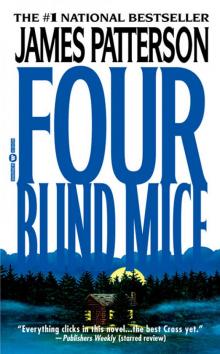 Four Blind Mice
Four Blind Mice Tick Tock
Tick Tock Private L.A.
Private L.A. Middle School, the Worst Years of My Life
Middle School, the Worst Years of My Life Cross Country
Cross Country The Final Warning
The Final Warning Word of Mouse
Word of Mouse Come and Get Us
Come and Get Us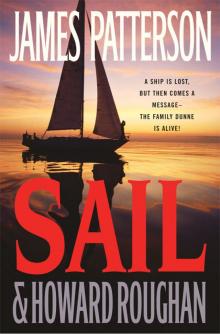 Sail
Sail I Funny TV: A Middle School Story
I Funny TV: A Middle School Story Private London
Private London Save Rafe!
Save Rafe! Swimsuit
Swimsuit Sam's Letters to Jennifer
Sam's Letters to Jennifer 3rd Degree
3rd Degree Double Cross
Double Cross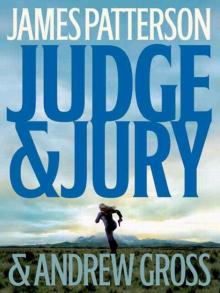 Judge & Jury
Judge & Jury Kiss the Girls
Kiss the Girls Second Honeymoon
Second Honeymoon Guilty Wives
Guilty Wives 1st to Die
1st to Die NYPD Red 4
NYPD Red 4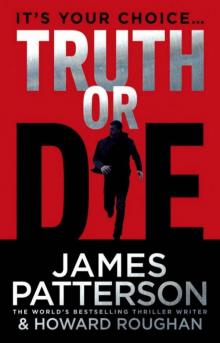 Truth or Die
Truth or Die Private Vegas
Private Vegas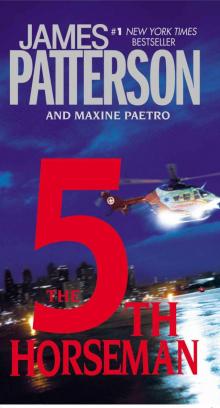 The 5th Horseman
The 5th Horseman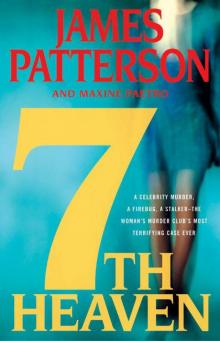 7th Heaven
7th Heaven I Even Funnier
I Even Funnier Cross My Heart
Cross My Heart Let’s Play Make-Believe
Let’s Play Make-Believe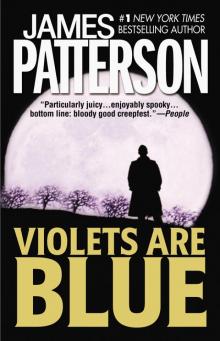 Violets Are Blue
Violets Are Blue Zoo
Zoo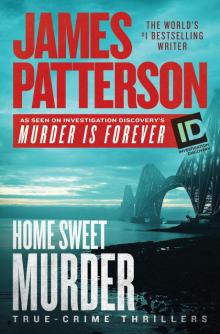 Home Sweet Murder
Home Sweet Murder The Private School Murders
The Private School Murders Alex Cross, Run
Alex Cross, Run Hunted: BookShots
Hunted: BookShots The Fire
The Fire Chase
Chase 14th Deadly Sin
14th Deadly Sin Bloody Valentine
Bloody Valentine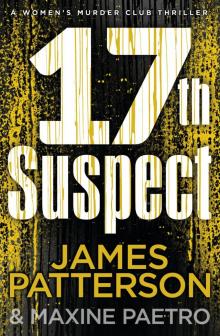 The 17th Suspect
The 17th Suspect The 8th Confession
The 8th Confession 4th of July
4th of July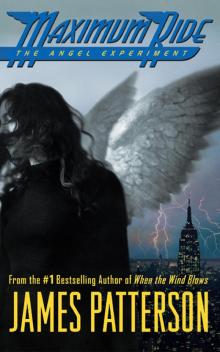 The Angel Experiment
The Angel Experiment Crazy House
Crazy House School's Out - Forever
School's Out - Forever Suzanne's Diary for Nicholas
Suzanne's Diary for Nicholas Cross Justice
Cross Justice Maximum Ride Forever
Maximum Ride Forever The Thomas Berryman Number
The Thomas Berryman Number Honeymoon
Honeymoon The Medical Examiner
The Medical Examiner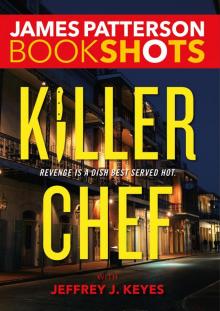 Killer Chef
Killer Chef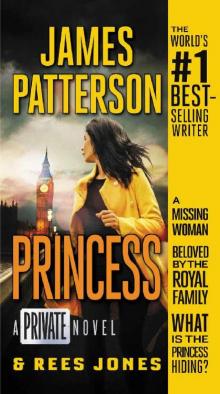 Private Princess
Private Princess Private Games
Private Games Burn
Burn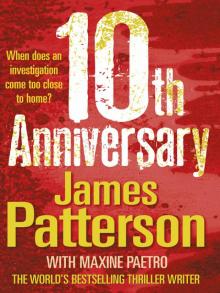 10th Anniversary
10th Anniversary I Totally Funniest: A Middle School Story
I Totally Funniest: A Middle School Story Taking the Titanic
Taking the Titanic The Lawyer Lifeguard
The Lawyer Lifeguard The 6th Target
The 6th Target Cross the Line
Cross the Line Alert
Alert Saving the World and Other Extreme Sports
Saving the World and Other Extreme Sports 1st Case
1st Case Unlucky 13
Unlucky 13 Haunted
Haunted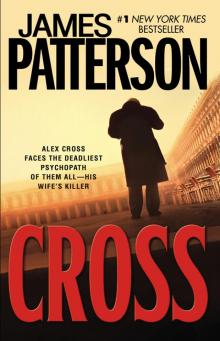 Cross
Cross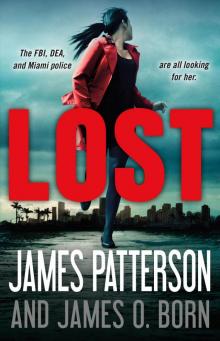 Lost
Lost 11th Hour
11th Hour Bookshots Thriller Omnibus
Bookshots Thriller Omnibus Target: Alex Cross
Target: Alex Cross Hope to Die
Hope to Die The Noise
The Noise Worst Case
Worst Case Dog's Best Friend
Dog's Best Friend Nevermore: The Final Maximum Ride Adventure
Nevermore: The Final Maximum Ride Adventure I Funny: A Middle School Story
I Funny: A Middle School Story NYPD Red
NYPD Red Till Murder Do Us Part
Till Murder Do Us Part Black & Blue
Black & Blue Fang
Fang Liar Liar
Liar Liar The Inn
The Inn Sundays at Tiffany's
Sundays at Tiffany's Middle School: Escape to Australia
Middle School: Escape to Australia Cat and Mouse
Cat and Mouse Instinct
Instinct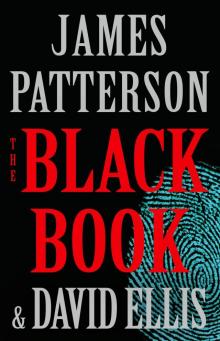 The Black Book
The Black Book London Bridges
London Bridges Toys
Toys The Last Days of John Lennon
The Last Days of John Lennon Roses Are Red
Roses Are Red Witch & Wizard
Witch & Wizard The Dolls
The Dolls The Christmas Wedding
The Christmas Wedding The River Murders
The River Murders The 18th Abduction
The 18th Abduction The 19th Christmas
The 19th Christmas Middle School: How I Got Lost in London
Middle School: How I Got Lost in London Just My Rotten Luck
Just My Rotten Luck Red Alert
Red Alert Walk in My Combat Boots
Walk in My Combat Boots Three Women Disappear
Three Women Disappear 21st Birthday
21st Birthday All-American Adventure
All-American Adventure Becoming Muhammad Ali
Becoming Muhammad Ali The Murder of an Angel
The Murder of an Angel The 13-Minute Murder
The 13-Minute Murder Rebels With a Cause
Rebels With a Cause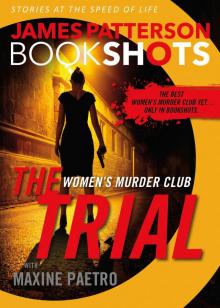 The Trial
The Trial Run for Your Life
Run for Your Life The House Next Door
The House Next Door NYPD Red 2
NYPD Red 2 Ali Cross
Ali Cross The Big Bad Wolf
The Big Bad Wolf Middle School: My Brother Is a Big, Fat Liar
Middle School: My Brother Is a Big, Fat Liar Private Paris
Private Paris Miracle on the 17th Green
Miracle on the 17th Green The People vs. Alex Cross
The People vs. Alex Cross The Beach House
The Beach House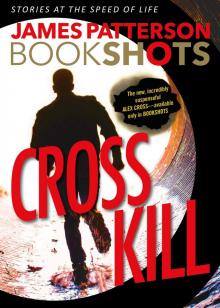 Cross Kill
Cross Kill Dog Diaries
Dog Diaries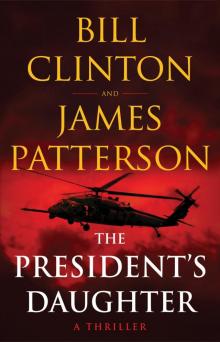 The President's Daughter
The President's Daughter Happy Howlidays
Happy Howlidays Detective Cross
Detective Cross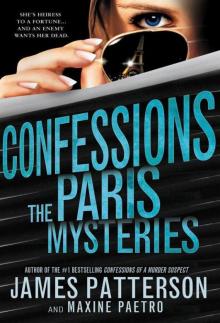 The Paris Mysteries
The Paris Mysteries Watch the Skies
Watch the Skies 113 Minutes
113 Minutes Alex Cross's Trial
Alex Cross's Trial NYPD Red 3
NYPD Red 3 Hush Hush
Hush Hush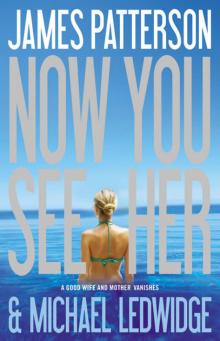 Now You See Her
Now You See Her Merry Christmas, Alex Cross
Merry Christmas, Alex Cross 2nd Chance
2nd Chance Private Royals
Private Royals Two From the Heart
Two From the Heart Max
Max I, Funny
I, Funny Blindside (Michael Bennett)
Blindside (Michael Bennett) Sophia, Princess Among Beasts
Sophia, Princess Among Beasts Armageddon
Armageddon Don't Blink
Don't Blink NYPD Red 6
NYPD Red 6 The First Lady
The First Lady Texas Outlaw
Texas Outlaw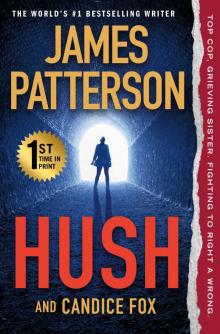 Hush
Hush Beach Road
Beach Road Private Berlin
Private Berlin The Family Lawyer
The Family Lawyer Jack & Jill
Jack & Jill The Midwife Murders
The Midwife Murders Middle School: Rafe's Aussie Adventure
Middle School: Rafe's Aussie Adventure The Murder of King Tut: The Plot to Kill the Child King
The Murder of King Tut: The Plot to Kill the Child King First Love
First Love The Dangerous Days of Daniel X
The Dangerous Days of Daniel X Hawk
Hawk Private Delhi
Private Delhi The 20th Victim
The 20th Victim The Shadow
The Shadow Katt vs. Dogg
Katt vs. Dogg The Palm Beach Murders
The Palm Beach Murders 2 Sisters Detective Agency
2 Sisters Detective Agency Humans, Bow Down
Humans, Bow Down You've Been Warned
You've Been Warned Cradle and All
Cradle and All 20th Victim: (Women’s Murder Club 20) (Women's Murder Club)
20th Victim: (Women’s Murder Club 20) (Women's Murder Club) Season of the Machete
Season of the Machete Woman of God
Woman of God Mary, Mary
Mary, Mary Blindside
Blindside Invisible
Invisible The Chef
The Chef Revenge
Revenge See How They Run
See How They Run Pop Goes the Weasel
Pop Goes the Weasel 15th Affair
15th Affair Middle School: Get Me Out of Here!
Middle School: Get Me Out of Here! Middle School: How I Survived Bullies, Broccoli, and Snake Hill
Middle School: How I Survived Bullies, Broccoli, and Snake Hill From Hero to Zero - Chris Tebbetts
From Hero to Zero - Chris Tebbetts G'day, America
G'day, America Max Einstein Saves the Future
Max Einstein Saves the Future The Cornwalls Are Gone
The Cornwalls Are Gone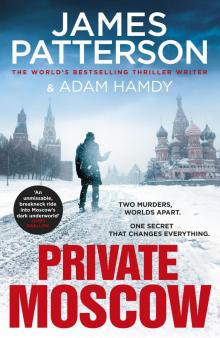 Private Moscow
Private Moscow Two Schools Out - Forever
Two Schools Out - Forever Hollywood 101
Hollywood 101 Deadly Cargo: BookShots
Deadly Cargo: BookShots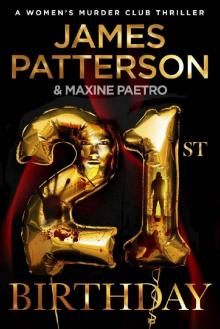 21st Birthday (Women's Murder Club)
21st Birthday (Women's Murder Club) The Sky Is Falling
The Sky Is Falling Cajun Justice
Cajun Justice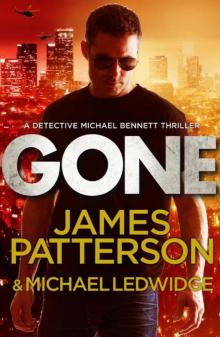 Bennett 06 - Gone
Bennett 06 - Gone The House of Kennedy
The House of Kennedy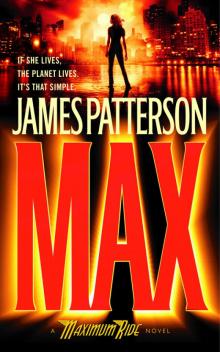 Waterwings
Waterwings Murder is Forever, Volume 2
Murder is Forever, Volume 2 Maximum Ride 02
Maximum Ride 02 Treasure Hunters--The Plunder Down Under
Treasure Hunters--The Plunder Down Under Private Royals: BookShots (A Private Thriller)
Private Royals: BookShots (A Private Thriller) After the End
After the End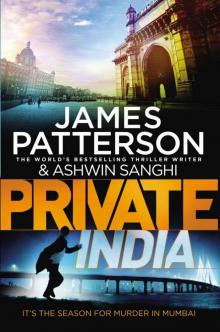 Private India: (Private 8)
Private India: (Private 8)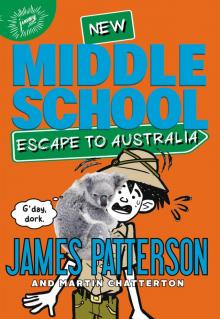 Escape to Australia
Escape to Australia WMC - First to Die
WMC - First to Die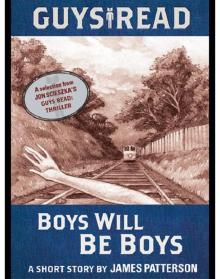 Boys Will Be Boys
Boys Will Be Boys The Red Book
The Red Book 11th hour wmc-11
11th hour wmc-11 Hidden
Hidden You've Been Warned--Again
You've Been Warned--Again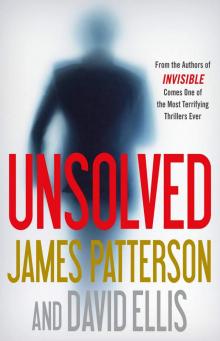 Unsolved
Unsolved Pottymouth and Stoopid
Pottymouth and Stoopid Hope to Die: (Alex Cross 22)
Hope to Die: (Alex Cross 22) The Moores Are Missing
The Moores Are Missing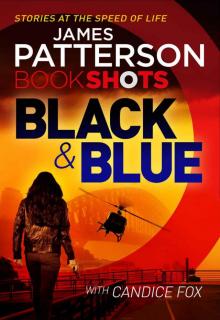 Black & Blue: BookShots (Detective Harriet Blue Series)
Black & Blue: BookShots (Detective Harriet Blue Series) Airport - Code Red: BookShots
Airport - Code Red: BookShots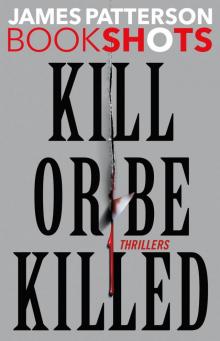 Kill or Be Killed
Kill or Be Killed School's Out--Forever
School's Out--Forever When the Wind Blows
When the Wind Blows Heist: BookShots
Heist: BookShots Murder of Innocence (Murder Is Forever)
Murder of Innocence (Murder Is Forever) Red Alert_An NYPD Red Mystery
Red Alert_An NYPD Red Mystery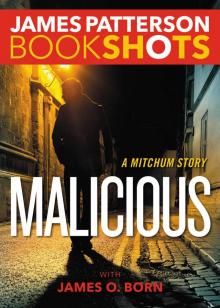 Malicious
Malicious Scott Free
Scott Free The Summer House
The Summer House French Kiss
French Kiss Treasure Hunters
Treasure Hunters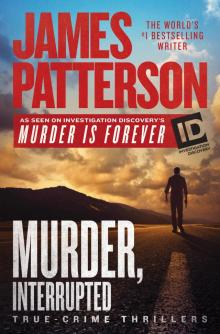 Murder Is Forever, Volume 1
Murder Is Forever, Volume 1 Secret of the Forbidden City
Secret of the Forbidden City Cross the Line: (Alex Cross 24)
Cross the Line: (Alex Cross 24) Witch & Wizard: The Fire
Witch & Wizard: The Fire![Women's Murder Club [06] The 6th Target Read online](http://i1.bookreadfree.com/i/03/24/womens_murder_club_06_the_6th_target_preview.jpg) Women's Murder Club [06] The 6th Target
Women's Murder Club [06] The 6th Target Cross My Heart ac-21
Cross My Heart ac-21 Alex Cross’s Trial ак-15
Alex Cross’s Trial ак-15 Alex Cross 03 - Jack & Jill
Alex Cross 03 - Jack & Jill Liar Liar: (Harriet Blue 3) (Detective Harriet Blue Series)
Liar Liar: (Harriet Blue 3) (Detective Harriet Blue Series) Cross Country ак-14
Cross Country ак-14 Honeymoon h-1
Honeymoon h-1 Maximum Ride: The Angel Experiment
Maximum Ride: The Angel Experiment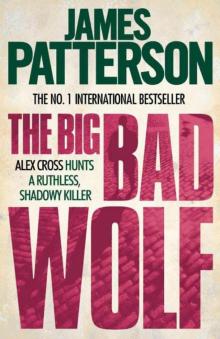 The Big Bad Wolf ак-9
The Big Bad Wolf ак-9 Dead Heat: BookShots (Book Shots)
Dead Heat: BookShots (Book Shots)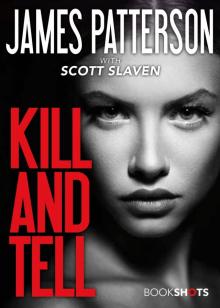 Kill and Tell
Kill and Tell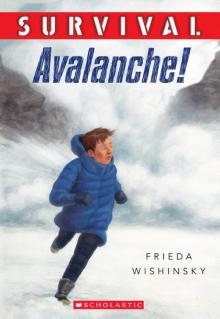 Avalanche
Avalanche Robot Revolution
Robot Revolution Public School Superhero
Public School Superhero 12th of Never
12th of Never Max: A Maximum Ride Novel
Max: A Maximum Ride Novel All-American Murder
All-American Murder Murder Games
Murder Games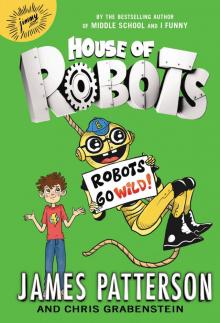 Robots Go Wild!
Robots Go Wild! My Life Is a Joke
My Life Is a Joke Private: Gold
Private: Gold Demons and Druids
Demons and Druids Jacky Ha-Ha
Jacky Ha-Ha Postcard killers
Postcard killers Princess: A Private Novel
Princess: A Private Novel Kill Alex Cross ac-18
Kill Alex Cross ac-18 12th of Never wmc-12
12th of Never wmc-12 The Murder of King Tut
The Murder of King Tut I Totally Funniest
I Totally Funniest Cross Fire ак-17
Cross Fire ак-17 Count to Ten
Count to Ten![Women's Murder Club [10] 10th Anniversary Read online](http://i1.bookreadfree.com/i1/03/30/womens_murder_club_10_10th_anniversary_preview.jpg) Women's Murder Club [10] 10th Anniversary
Women's Murder Club [10] 10th Anniversary![Women's Murder Club [01] 1st to Die Read online](http://i1.bookreadfree.com/i1/03/31/womens_murder_club_01_1st_to_die_preview.jpg) Women's Murder Club [01] 1st to Die
Women's Murder Club [01] 1st to Die I, Michael Bennett mb-5
I, Michael Bennett mb-5 Nooners
Nooners![Women's Murder Club [08] The 8th Confession Read online](http://i1.bookreadfree.com/i1/04/03/womens_murder_club_08_the_8th_confession_preview.jpg) Women's Murder Club [08] The 8th Confession
Women's Murder Club [08] The 8th Confession Private jm-1
Private jm-1 Treasure Hunters: Danger Down the Nile
Treasure Hunters: Danger Down the Nile Worst Case mb-3
Worst Case mb-3 Don’t Blink
Don’t Blink The Games
The Games The Medical Examiner: A Women's Murder Club Story
The Medical Examiner: A Women's Murder Club Story Black Market
Black Market Gone mb-6
Gone mb-6![Women's Murder Club [02] 2nd Chance Read online](http://i1.bookreadfree.com/i1/04/04/womens_murder_club_02_2nd_chance_preview.jpg) Women's Murder Club [02] 2nd Chance
Women's Murder Club [02] 2nd Chance French Twist
French Twist Kenny Wright
Kenny Wright Manhunt: A Michael Bennett Story
Manhunt: A Michael Bennett Story Cross Kill: An Alex Cross Story
Cross Kill: An Alex Cross Story Confessions of a Murder Suspect td-1
Confessions of a Murder Suspect td-1 Second Honeymoon h-2
Second Honeymoon h-2 Chase_A BookShot_A Michael Bennett Story
Chase_A BookShot_A Michael Bennett Story Confessions: The Paris Mysteries
Confessions: The Paris Mysteries![Women's Murder Club [09] The 9th Judgment Read online](http://i1.bookreadfree.com/i2/04/08/womens_murder_club_09_the_9th_judgment_preview.jpg) Women's Murder Club [09] The 9th Judgment
Women's Murder Club [09] The 9th Judgment Absolute Zero
Absolute Zero Nevermore: The Final Maximum Ride Adventure mr-8
Nevermore: The Final Maximum Ride Adventure mr-8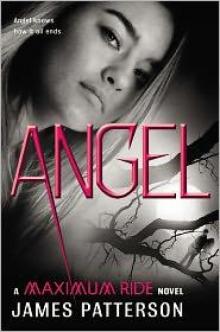 Angel: A Maximum Ride Novel mr-7
Angel: A Maximum Ride Novel mr-7 Juror #3
Juror #3 Million-Dollar Mess Down Under
Million-Dollar Mess Down Under The Verdict: BookShots (A Jon Roscoe Thriller)
The Verdict: BookShots (A Jon Roscoe Thriller)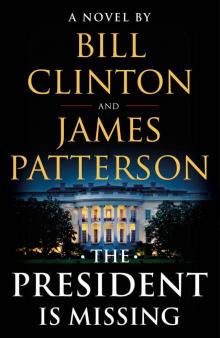 The President Is Missing: A Novel
The President Is Missing: A Novel![Women's Murder Club [04] 4th of July Read online](http://i1.bookreadfree.com/i2/04/06/womens_murder_club_04_4th_of_july_preview.jpg) Women's Murder Club [04] 4th of July
Women's Murder Club [04] 4th of July The Hostage: BookShots (Hotel Series)
The Hostage: BookShots (Hotel Series) $10,000,000 Marriage Proposal
$10,000,000 Marriage Proposal Diary of a Succubus
Diary of a Succubus Unbelievably Boring Bart
Unbelievably Boring Bart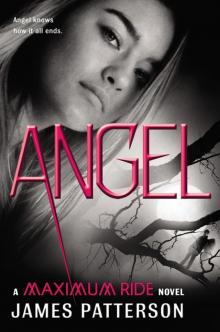 Angel: A Maximum Ride Novel
Angel: A Maximum Ride Novel Stingrays
Stingrays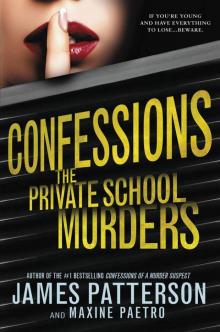 Confessions: The Private School Murders
Confessions: The Private School Murders Stealing Gulfstreams
Stealing Gulfstreams![Women's Murder Club [05] The 5th Horseman Read online](http://i1.bookreadfree.com/i2/04/05/womens_murder_club_05_the_5th_horseman_preview.jpg) Women's Murder Club [05] The 5th Horseman
Women's Murder Club [05] The 5th Horseman Zoo 2
Zoo 2 Jack Morgan 02 - Private London
Jack Morgan 02 - Private London Treasure Hunters--Quest for the City of Gold
Treasure Hunters--Quest for the City of Gold The Christmas Mystery
The Christmas Mystery Murder in Paradise
Murder in Paradise Kidnapped: BookShots (A Jon Roscoe Thriller)
Kidnapped: BookShots (A Jon Roscoe Thriller)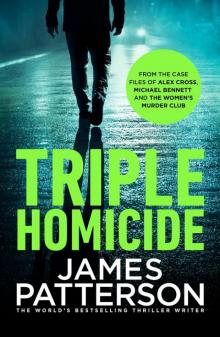 Triple Homicide_Thrillers
Triple Homicide_Thrillers 16th Seduction: (Women’s Murder Club 16) (Women's Murder Club)
16th Seduction: (Women’s Murder Club 16) (Women's Murder Club)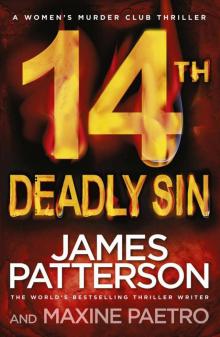 14th Deadly Sin: (Women’s Murder Club 14)
14th Deadly Sin: (Women’s Murder Club 14) Texas Ranger
Texas Ranger Witch & Wizard 04 - The Kiss
Witch & Wizard 04 - The Kiss![Women's Murder Club [03] 3rd Degree Read online](http://i1.bookreadfree.com/i2/04/12/womens_murder_club_03_3rd_degree_preview.jpg) Women's Murder Club [03] 3rd Degree
Women's Murder Club [03] 3rd Degree Break Point: BookShots
Break Point: BookShots Alex Cross 04 - Cat & Mouse
Alex Cross 04 - Cat & Mouse Maximum Ride
Maximum Ride Fifty Fifty: (Harriet Blue 2) (Detective Harriet Blue Series)
Fifty Fifty: (Harriet Blue 2) (Detective Harriet Blue Series) Alex Cross 02 - Kiss the Girls
Alex Cross 02 - Kiss the Girls The President Is Missing
The President Is Missing Hunted
Hunted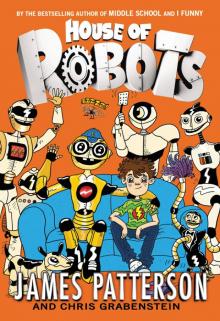 House of Robots
House of Robots Dangerous Days of Daniel X
Dangerous Days of Daniel X Tick Tock mb-4
Tick Tock mb-4 10th Anniversary wmc-10
10th Anniversary wmc-10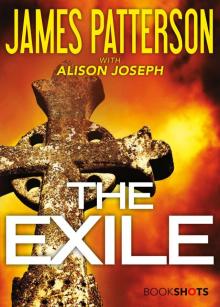 The Exile
The Exile Private Games-Jack Morgan 4 jm-4
Private Games-Jack Morgan 4 jm-4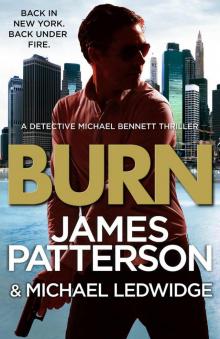 Burn: (Michael Bennett 7)
Burn: (Michael Bennett 7) Laugh Out Loud
Laugh Out Loud The People vs. Alex Cross: (Alex Cross 25)
The People vs. Alex Cross: (Alex Cross 25)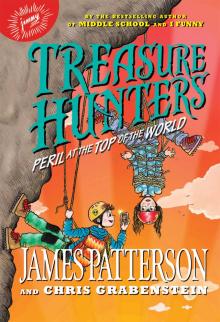 Peril at the Top of the World
Peril at the Top of the World I Funny TV
I Funny TV Merry Christmas, Alex Cross ac-19
Merry Christmas, Alex Cross ac-19 #1 Suspect jm-3
#1 Suspect jm-3 Fang: A Maximum Ride Novel
Fang: A Maximum Ride Novel![Women's Murder Club [07] 7th Heaven Read online](http://i1.bookreadfree.com/i2/04/13/womens_murder_club_07_7th_heaven_preview.jpg) Women's Murder Club [07] 7th Heaven
Women's Murder Club [07] 7th Heaven The End
The End